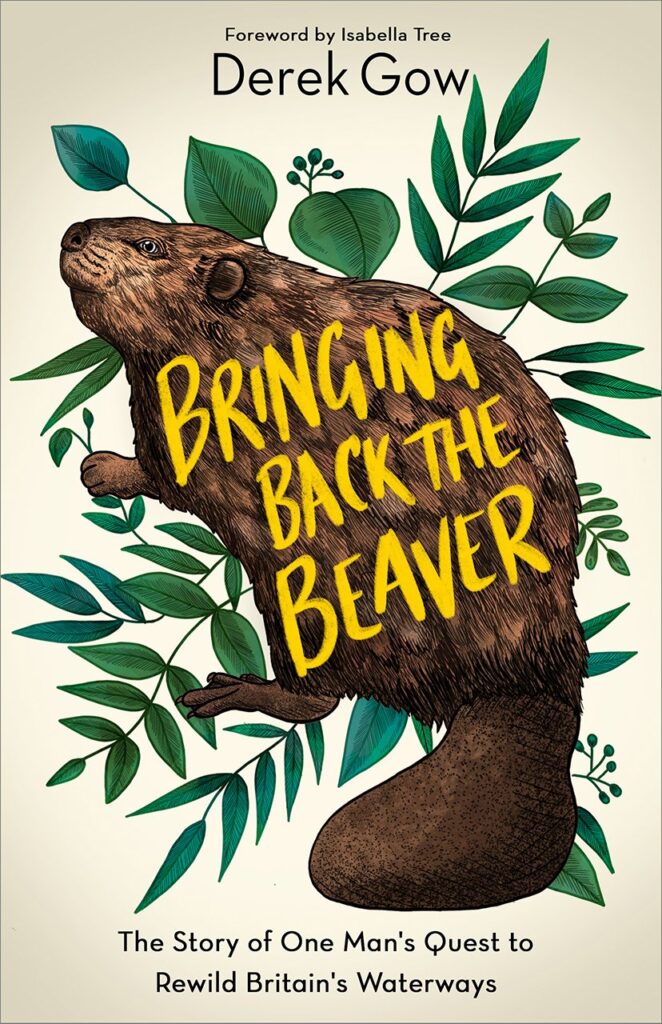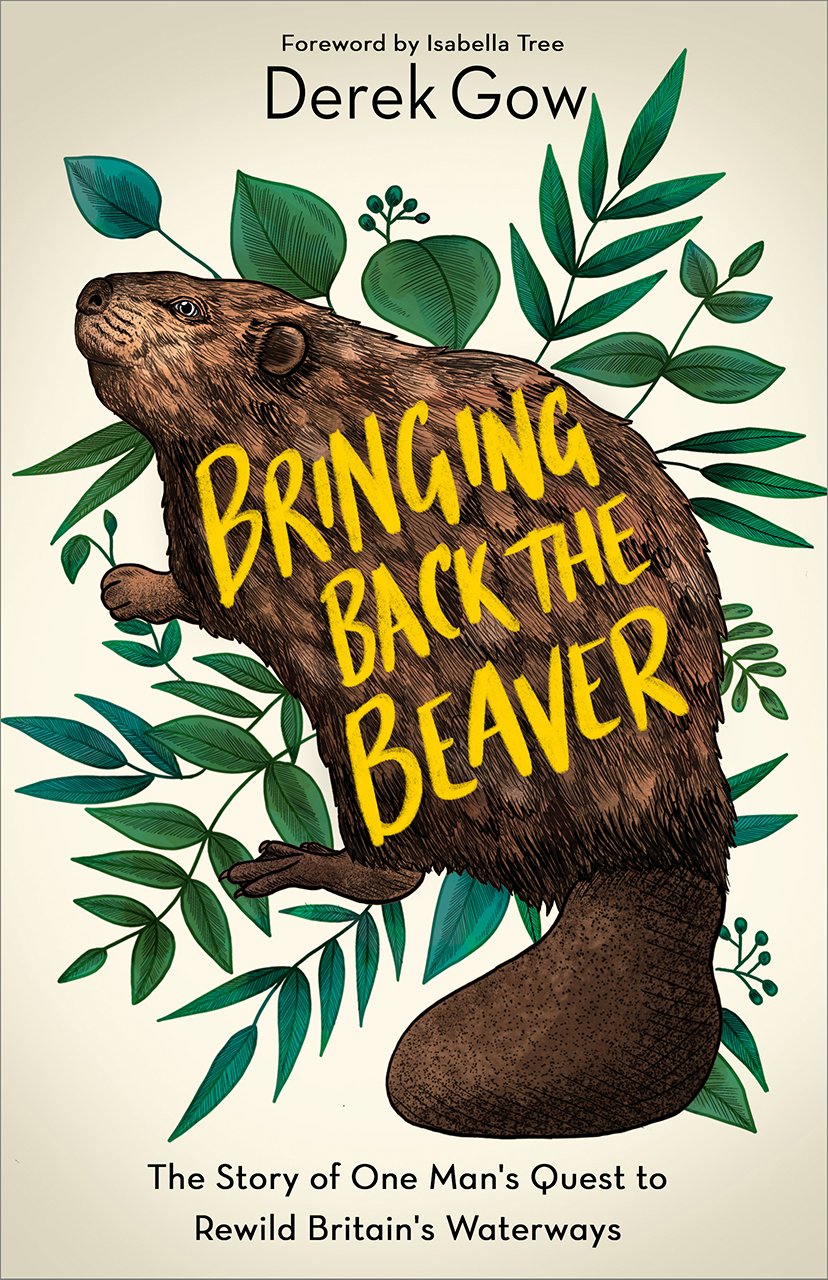This tale chronicles the opening stage of the return of the Beaver to Britain’s watery places, told from the front line. There is no better place from which to view the tragi-comic events which unfold, and no better person to describe it than Derek Gow, a man of action as well as a powerful Beaver advocate. This account is unexpected, oddball, and, despite its serious side, enormously entertaining. This is conservation viewed from the trenches, the smell of cordite filling the air. Its larger-than-life narrator is in a unique position to capture this, as he has been in the thick of the ‘bring back the Beaver’ campaign from the off.
The short prologue is a taster of what is to come. It starts with a dark head breaking the surface of a pool on the wrong side of the fence. Freedom. The police arrive – ten years later. We meet grumpy farmers and civil servants. The owner of a wildlife park merits an early cameo. Dressed in plus-fours, with hair sprouting from his ears, he resembles a cross between ‘one of Queen Victoria’s more martial highland retainers’ and a squirrel.
It is followed by a long chapter which delves into Beaver history. This is called ‘The Salvation of St Felix’. As with many of Gow’s chapter titles, you have to wait for the explanation. In the case of Chapter 5, ‘If you look now at her face’, the explanation is very funny and very rude. It will send some readers into hysterical laughter (I was one of those) but others may be offended. I do not think Gow would be too worried about the latter. He is telling his story his way. In his determined beavering, he does not beat about the bush.
To uncover the origins of his Beaver quest, the book becomes memoir. He leaves school at 17, trains as a livestock auctioneer, manages rare breeds, attends an international school at Jersey Zoo and breeds Water Voles. This may sound dry, but the pleasure is in the telling. Events and characters are finely drawn, like his illustrations at the beginning of each chapter. Although he turned down the option of going to art college, his artwork is executed with care and vitality. Much the same could be said of his narrative – often careful, it is always vital.
Beavers are returning slowly but with certainty to our landscapes. Gow’s blow-by-blow account of the trials and tribulations of how this has been achieved (one chapter is called ‘Trials and Tributaries’) is a reminder that problems always come on two legs: the people who make it happen and those who try to thwart it; the heroes and villains. A particular hero, to whom the book is dedicated, is Bavarian Beaver legend Gerhard Schwab. ‘Big voice, big hair, big beard, big tummy, big heart but small, small dog.’
Press and media interest unleash public support. Landowners and fishermen are the butt of humour, although heroes such as Charlie Burrell of the Knepp Estate emerge from their number. Gow is particularly robust in his attitude to bureaucrats. Defra employees are ‘drawn from the school of prevarication. Their principal goal is to outcompete their fellows in ensuring pointless delay. The sort of fun folk it’s a joy to spend Christmas with when the time comes to take the Sellotape off the shortbread.’
Gow has given many talks about Beavers; he is in my experience an able, passionate and entertaining speaker. However, the spoken word does not necessarily translate on to the page. Not all of the writing is well crafted, perhaps because it has been written at speed, and there are some stylistic quirks and flourishes. Yet you can hear Gow’s voice loud and clear throughout. There is also some impressively good writing. I found it hard to put down. For the most part I was swept along in the current of a most enjoyable Beaver journey.
There could be no better account of the service to nature provided by a somewhat rotund, be-whiskered mammal than this; and of the water-engineering rodent which is his subject. Great fun, highly recommended.

